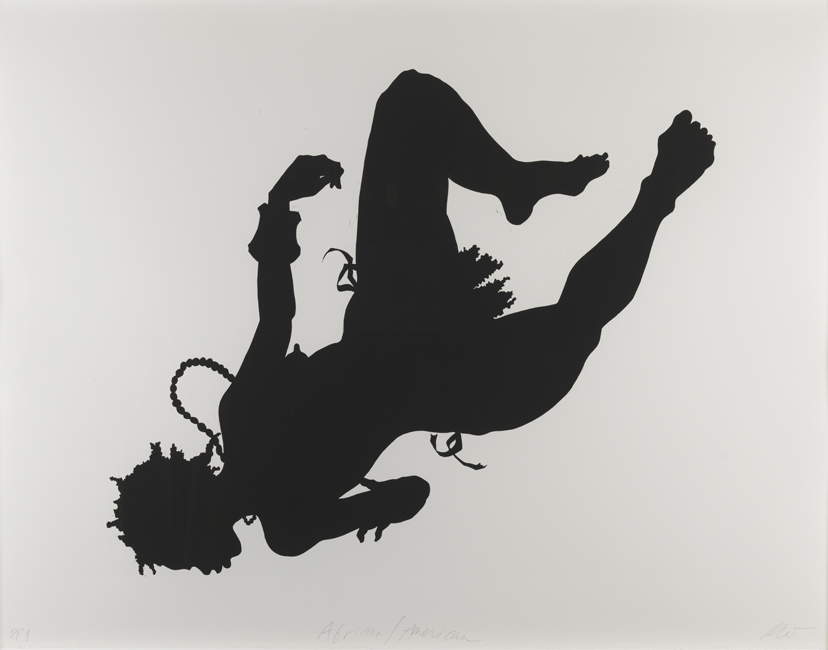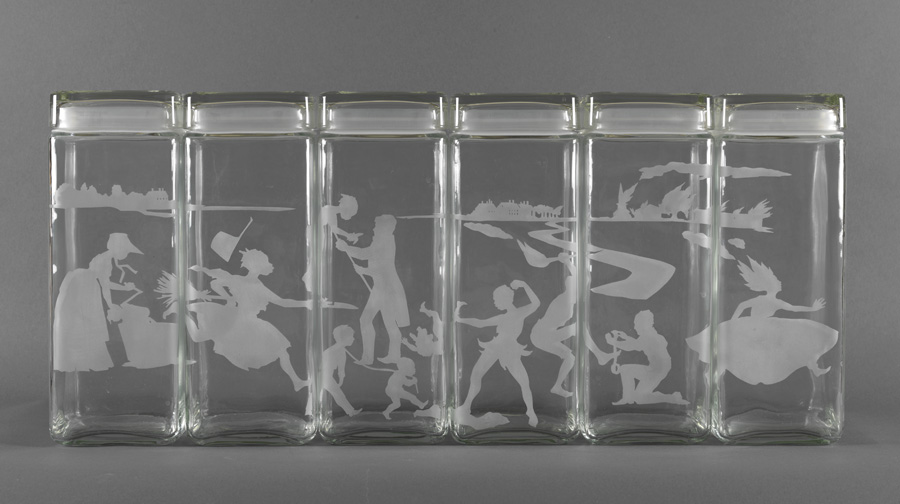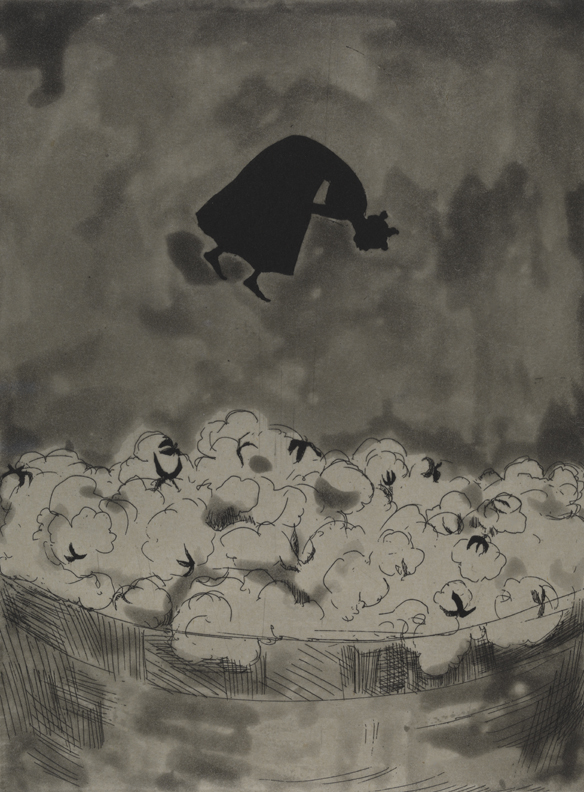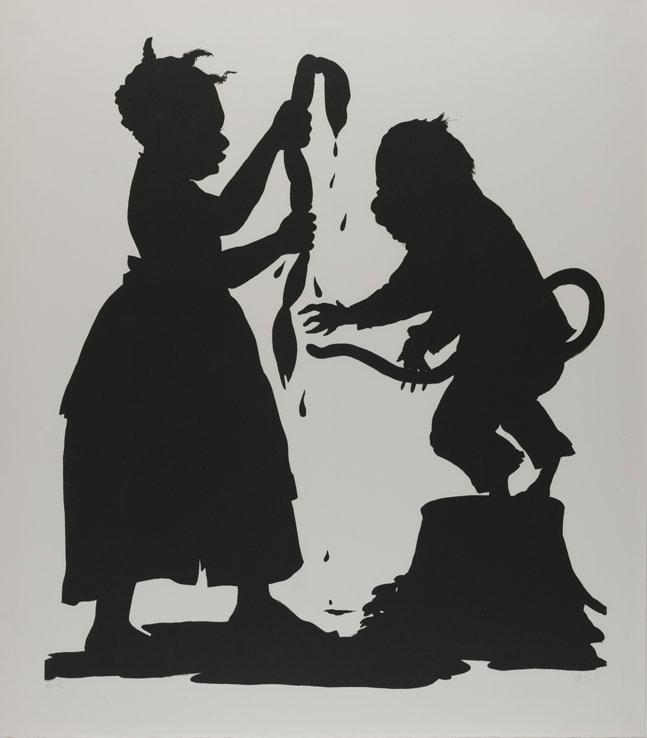
African/ American
Kara Walker
Kara Walker’s work skillfully and intelligently addresses identity issues through multiple aspects of African American history. During her graduate studies, Walker encountered black paper silhouettes from the antebellum period and Victorian era. Silhouettes were traditionally made as physiognomic amusements (as in the Peale Museum) or as domestic crafts in the form of paper figure cut-outs mounted onto white paper or into pre-printed interior scenes. These highly detailed and evocative shadow figures provided the inspiration for Walker’s best-known work.
Walker began to subvert the traditional function of this sentimental craft form by using it to explore painful aspects of America’s past. Drawing upon slave narratives, popular persistent stereotypes, Civil War-related literature and film, and her personal experience as an African American woman, Walker designs elaborate and provocative 'imagined narratives.' Her work has been praised for its forthright and visually-astute consideration of history, race, gender, and power relations. It has as often been condemned because of Walker’s willingness to confront the past using grotesque, violent, and self-deprecating “race” imagery and language. Walker’s visual language contributes to these opposite receptions. She has adopted a traditionally white, genteel, outmoded art form in order to interrogate racist caricatures and imagine the most violent, sexually abusive, and demeaning master-slave narrative. While this appropriation was a skillful visual and cultural critique of 19th century America, it was also a daring challenge to her generation to confront the past without silence.
"African/American" is one of Walker’s best-known works as it provokes questions central to her practice. The dual identity presented in the title also describes the figure as a symbolic figure that can be read as either African or American and a hybrid of both. Placing these words into opposition, separated by a slash immediately makes viewers confront the social, historical, and visual predicament of Americans with African blood. Walker willfully plays on all of these allusions. The space of the silhouette can similarly be read as absence, place of projection, blank slate, the hole left by the cutting-out of an earlier denigrating representation. These multiple levels of interpretation reveal the sophistication at play in the form and content of Walker’s art.
Artist
Date of Birth
(b. 1969)
Date
1998
Medium
Linoleum cut on Rives BFK paper; printer's proof #1 of 2
Dimensions
46 x 60 1/2 in. (116.84 x 153.67 cm.)
Accession #
2005.10
Credit Line
John S. Phillips Fund
Copyright
© 1998 Kara Walker
Category
Subject
We're so excited you're planning to visit PAFA!
Make time for art — visit us Thursday to Sunday.
Before reserving your tickets, please review helpful information about museum hours, accessibility, building access, and special admission programs.
If you have any questions, feel free to reach out to us at visitorservices@pafa.org — we’d love to help!


